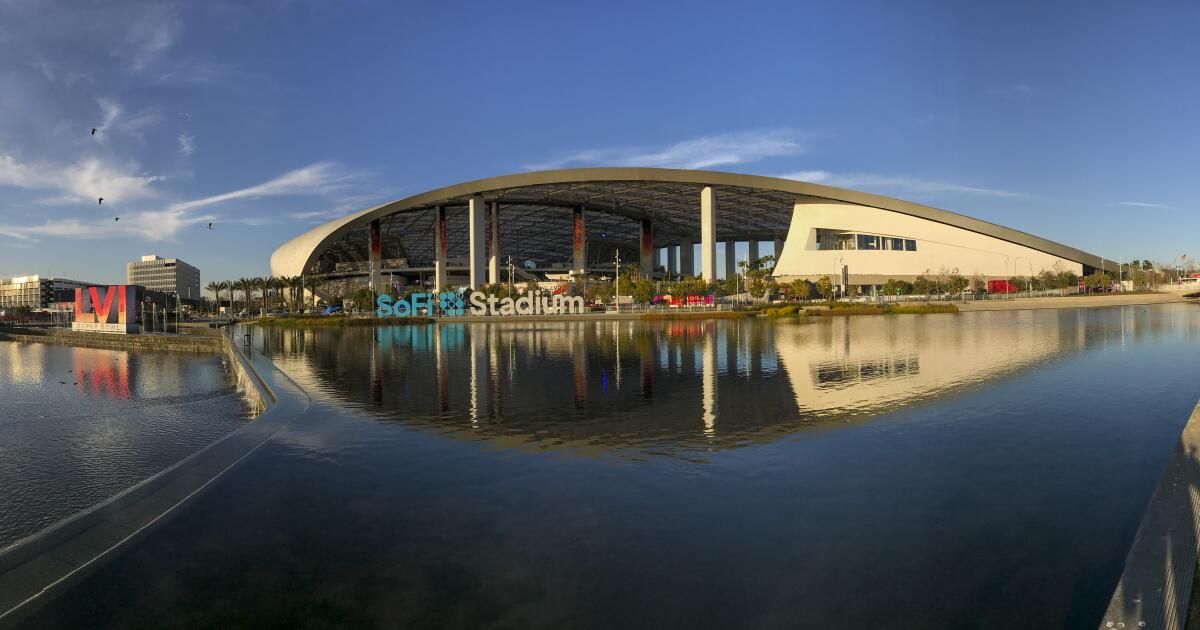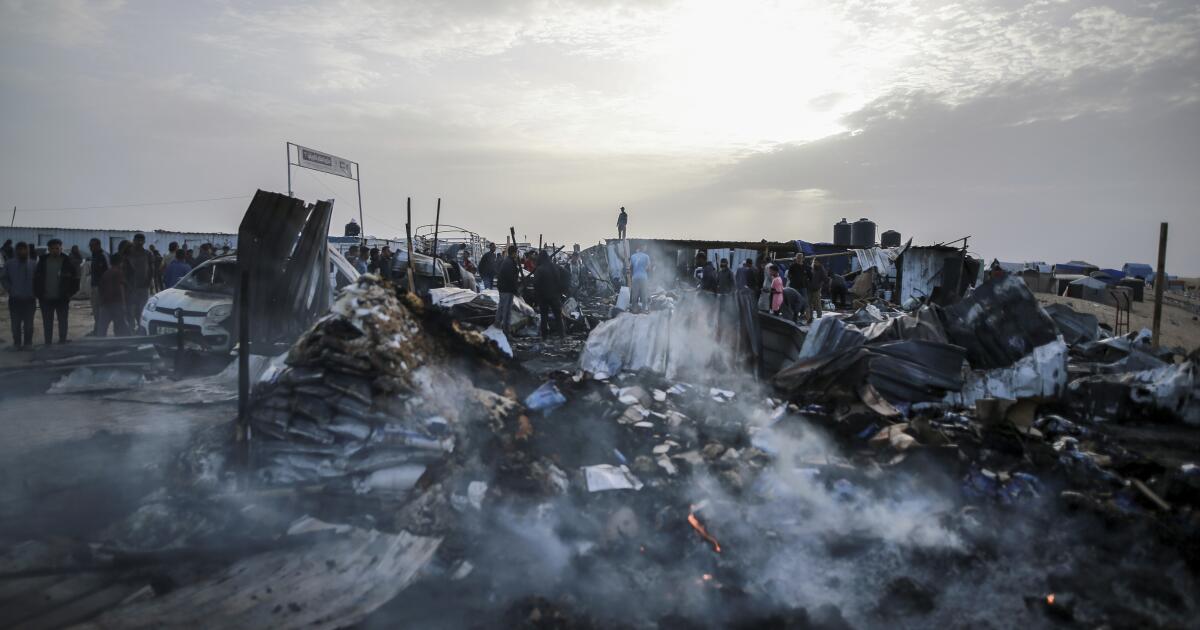To live in Inglewood these days is to live in tension with change. Like many other places in and around Los Angeles, its core is being transformed by development that has become a spectacle, something I've been watching with a mix of apprehension and disbelief.
SoFi Stadium isn't just a stadium, it's become shorthand for everything else in the built world of Hollywood Park: condos, retail shops and the soon-to-be completed Intuit Dome, the new home of the Clippers, which will be rises on the corner of Prairie Avenue and Century Boulevard look like a giant space-age basketball.
All that glitter presses against the neighborhoods of the county's last solidly black city, and while the outside world touts SoFi, etc., as progress, in Inglewood it feels like the reconfiguration is being done without regard for the local population . .
But not completely.
Gentrification in Inglewood has always had a face of black uplift, which is part of what causes the tension. It's true that that face can be gratifying. During Black History Month, SoFi presented an exhibit of world-class Black historical art and artifacts, courtesy of renowned collectors and philanthropists Bernard and Shirley Kinsey. This is an updated and improved version of the Kinsey exhibit that debuted in February 2023.
Next door to SoFi, on the walkway of a new commercial development that includes a luxury movie theater, are works by celebrated black sculptor Alison Saar. Last year, that walkway was the scene of a lively weekend festival for Black-owned businesses. On the side of one building is a striking mural of a black woman floating in water, the work of local artist Calida Rawles. And on other walls, advertisements show black residents enjoying the amenities of a fashionable, prosperous new city that attracts people of all colors from all over Los Angeles and around the world, as signs along Prairie suggest. They declare “A global scenario.”
It's a heady vision of the future, one I'd love to believe in. Every time I hustle down that walkway on my way to see a movie, I marvel at the museum-quality art right here in the neighborhood, in the open air. It's an improvement I can't argue with.
And yet, the overall picture is not entirely pretty. Part of SoFi's development agreement with Inglewood was a commitment to commission public art in and around the stadium. It's actually a requirement for large developments like this. The city was supposed to oversee the process, but more or less ceded that power to the developer, just as it ceded other types of oversight when it fast-tracked the stadium in 2015.
The City Council has always been willing to give up almost anything for development, especially sports facilities. Because? Because for too long the city languished as what I call the South Central South Bay, struggling to attract even modest national chain stores because its black and brown demographic automatically made it an undesirable market. The recession of the early 1990s exacerbated the problem, along with the chronic inability or unwillingness of elected officials to plan serious changes.
Thus, SoFi was sold to and by City Hall as our great agent of change, which would ultimately take Inglewood from moribund to modern.
The stadium is bringing about change, but the cost seems too high and destabilizing. Art is wonderful and welcome, but what black people really need to secure their future are affordable housing and decent schools. SoFi and everything else protects neither. To the extent that the stadium and associated development have taken up public land in this great small city, it is actually making more affordable housing less attainable.
It's not all bad, of course. Notable Black commercial and creative spaces have been popping up in the new Inglewood, including galleries, restaurants, and coffee shops. Hilltop Café, for example, on La Brea Avenue, is co-owned by Issa Rae, a local girl done right.
These are the types of small but important businesses that Inglewood has always had, just not at critical mass. Together they express the true character and promise of the city, making it a destination; In real estate marketing terms, they make it “desirable.”
Hopefully, the new appeal will not be synonymous, as it often is, with “white.”
Rick Garzón, whose downtown gallery residence recently moved to the Hollywood Park shopping district near SoFi, told me he's confident Inglewood will defeat the usual displacement narrative of gentrification and create a new one of true black progress. It has the goods, he says, starting with a solid base of committed homeowners in the city who aren't going anywhere. Development may be putting pressure on us, but we will not crumble, he says. We are changing the game.
I'd love to believe that too. I wish the corporate campaign portraying Inglewood as black and thriving on its own terms (an equal partner in this rapid development) were true.
But history is against it. So is the math: The economics of gentrification, closely tied to the realities of the haves and have-nots, including the racial wealth gap, virtually guarantees that new homeowners will not be black. The same goes for renters, who are actually the majority of Inglewood residents. The median home price in some Inglewood neighborhoods is climbing to $900,000 now. That's downright modest in the overheated Los Angeles market, but it's out of reach for the black working and middle class that is the city's foundation.
Inglewood is a mosaic, but also a community with common needs. That fact is what makes us truly unique, a work of art in progress. Physical art, and art to come, accurately conveys the power and depth of Black people. We just have to live up to the image.
Erin Aubry Kaplan is an Opinion contributor and columnist for Excavation of the truth.










